Images for 2000
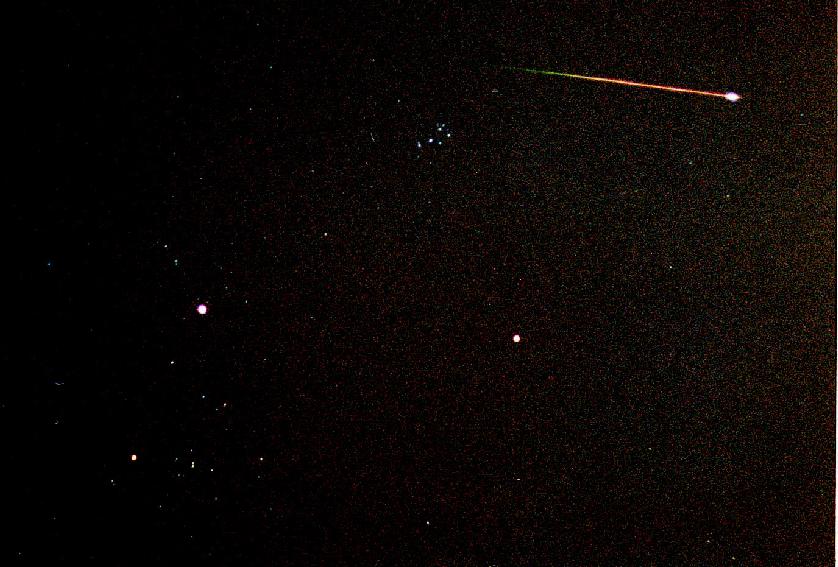
Leonid Meteor - November 17/18, 2000 AD
The two bright objects are Jupiter to the left, Saturn to the right, M45
also known as the Pleiades were the meteor starts, and the "V" shaped
Haydes cluster is below Jupiter. The photo was taken from my balcony in
Halifax, Nova Scotia, Canada on November 17/18, 2000. I had just started
the exposure when the fireball appeared. I used a Soviet made Zenit B
camera with a 50 mm f/1.8 lens and Kodak Gold 400 ASA film.
==============================================================
Images for 2001
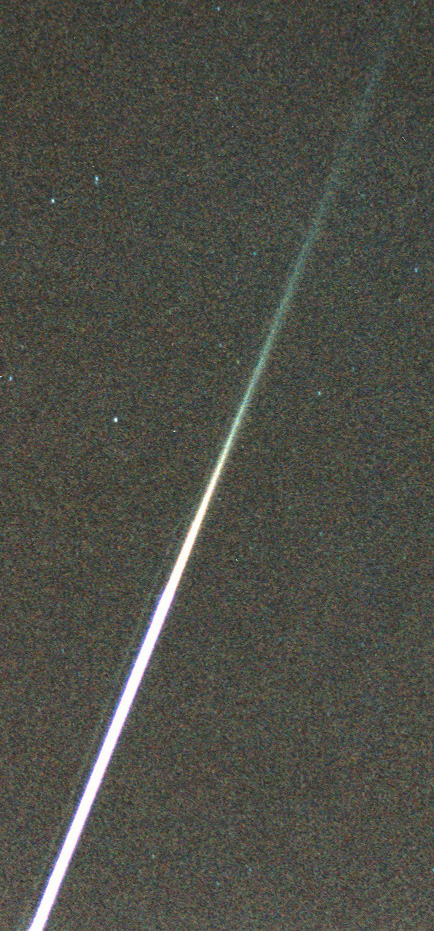


Re-entry of Soviet/Russian Molniya 3 rocket booster - Aug.11/12,
2001 - 0342 UT
The images go from the longest one as I first saw it about max altitude
above horizion near the constellation Delphinus and the two shorter
images as it began to descend towards the SE, were the last image it was
starting to go into clouds over the ocean nearing the end of it's burnup.
Note a "fragment" to the left of two images.
I used my Soviet made Zenit-B camera with a 50mm f/1.7 lens
and Kodak Gold 400 ASA film. The exposures are close to 10 seconds +/-
5 seconds. I shot the photos from the roof of Dalhousie University in
Halifax, Nova Scotia, Canada. Lat== N44d 36' Long= W63d 36'

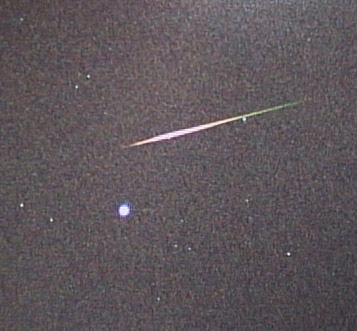
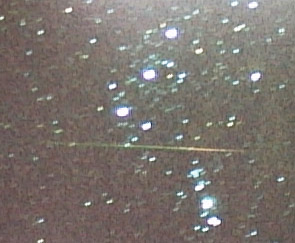


Leonid Meteors of November 17/18, 2001 AD
I took these photos among others of the meteor shower from our
observatory at St.Croix, Nova Scotia, Canada. I used my Soviet
Zenit-B camera with a 50mm f/1.7 lens and Kodak Gold 400 ASA
film. Exposures varied from 30sec for the smoke trail to 5 minutes
for others. Observations ran from 0600 UT to 1000 UT. A realistic
estimate of the number of meteors seen at the peak near 0900 UT was
300 per hour.
=======================================================
Images for 2002
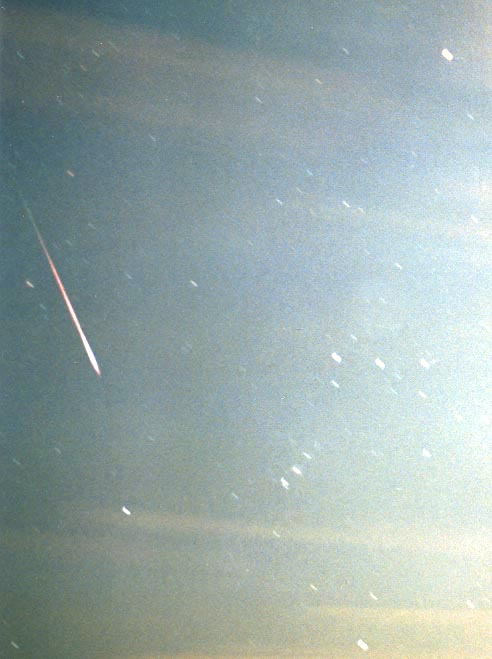
Leonid fireball of November 18/19, 2002 AD
The photo was taken from the roof at Dalhousie University
in Halifax, Nova Scotia, Canada. I used my Soviet Zenit-B
camera with a 50mm f/1.7 lens and Kodak Gold 400 ASA film.
The -6 fireball occured about 1020 UT near Orion in the southwest
just as twilight was begining in the east.
The Moon was still above the horizion and to the right
of the area, but was covered by clouds. As I started the exposure I
was distracted by another Leonid and lost count on the exposure time,
which was past 40 seconds. The fireball left a 1 second trail and produced
a slight terminal burst at the end.
I was lucky, after the film was developed I noticed that it was on my
last frame!
===============================================================
Images for 2007
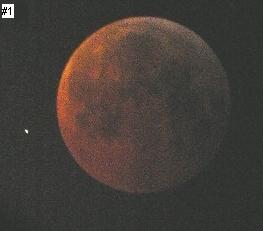
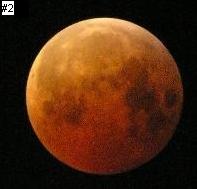
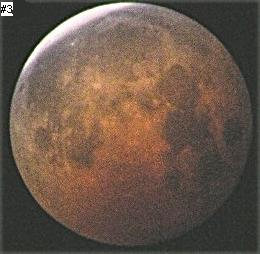
Total Lunar Eclipse - March 3, 2007
Images taken from my apartment balcony in Halifax, Nova Scotia, Canada.
Time: 2205-0010 UT
Telescope: Antares 105mm, f/10, refractor with a 40mm (25x) eyepiece and
my Olympus C-750 Digital Camera mounted over eyepiece.
The #1 image was at about 2206 UT was with camera and tripod only, at 1.6
seconds f/3.5 and ISO 400 and at 35x zoom. The bright star near 9pm
position is 59 Leonis.
The #2 image was at about 2340 UT and shot through the telescope at 5x
zoom 1.6 second exposure, f/3.5, ISO 400
The larger image #3 at 2359 UT was at about 15x zoom, 1.6 second exposure,
ISO 400 and using Registax I messed with 3 images to enhance it.
=====================================================================
Images for 2008
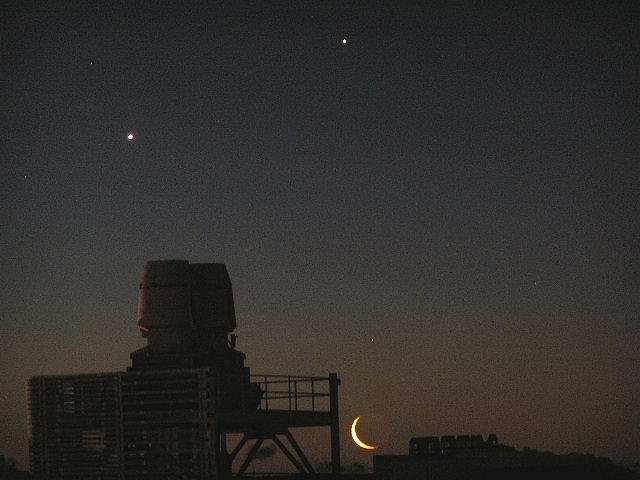
Venus,Jupiter,Moon - February 04, 2008 @ 1029 UT
Image taken from roof of Dalhousie University Physics building
in Halifax,Nova Scotia.Olympus C-750 digital camera set at 3.2
seconds exposure, f/3.2, 400 ISO.




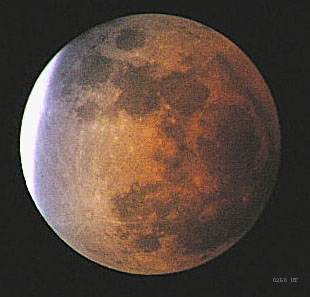

Total Lunar Eclipse - February 20/21,2008
The Total Lunar Eclipse was very nice, in the imgaes before
totality, note the bluish color between the bright area and the
eclipsed part.
Images taken with Olympus C-750 digital camera mounted over
my 40mm eyepiece on the 4" f/10 refractor. I zoomed in with
the camera to about 10x so that the image would fit. Images
start from 0245 UT to 0306 UT.
The wide angle shot was a 2 second exposure at about 20x zoom
showing Saturn to the left at about 0300 UT. I took the images
from my balcony in Halifax,Nova Scotia, Canada.
====================================================
Images for 2009

Lightning - April 26,2009
I was just looking at a cloud over by the Fairview container pier
and decided to take an exposure,I mounted the camera on tripod and
began shooting the 5 second exposures when I saw the flash and crack!
why I had the camera at a high f/# I don't know, but this was a really
lucky shot. I had not see the updated forecast for possible thundershowers taht
night. I used my Canon Rebel 350D camera. 18-55mm lens set to 55mm
at f/7.5 or f/8 and 400 ISO. Guess I'll be able to get meteors!

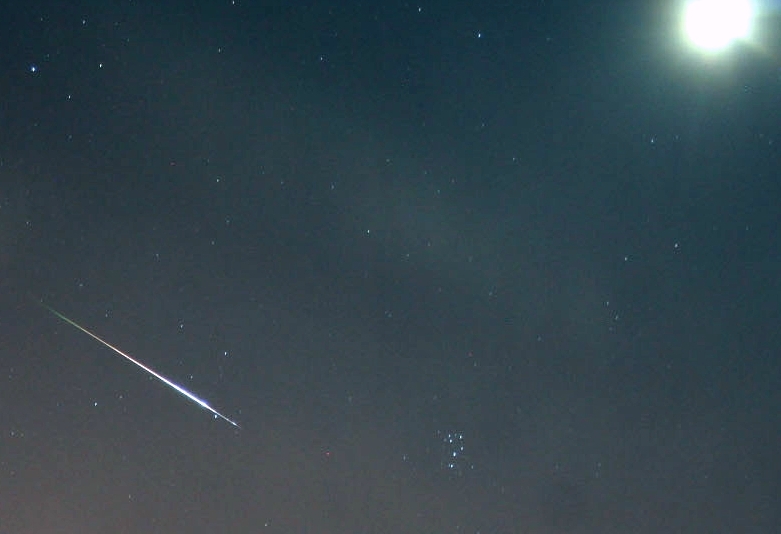
Two Perseid Fireballs - August 13/14,2009
These 2 fireballs captured from my balcony in Halifax,Nova Scotia.
First one appeared at 11:15pm while the next one was at 3:43am
and left a 2 second smoke trail. The bright object in upper right
is the Last Quarter Moon and the Pleaides are to the fireballs right.
Canon Rebel XT 350D camera lens set near 20mm fl,20 second exposures,
f/3.5 and 400 ISO.
==========================================================
Images for 2013

Comet Panstarrs - March 28,2013
Image from my balcony in Halifax,Nova Scotia,Canada.
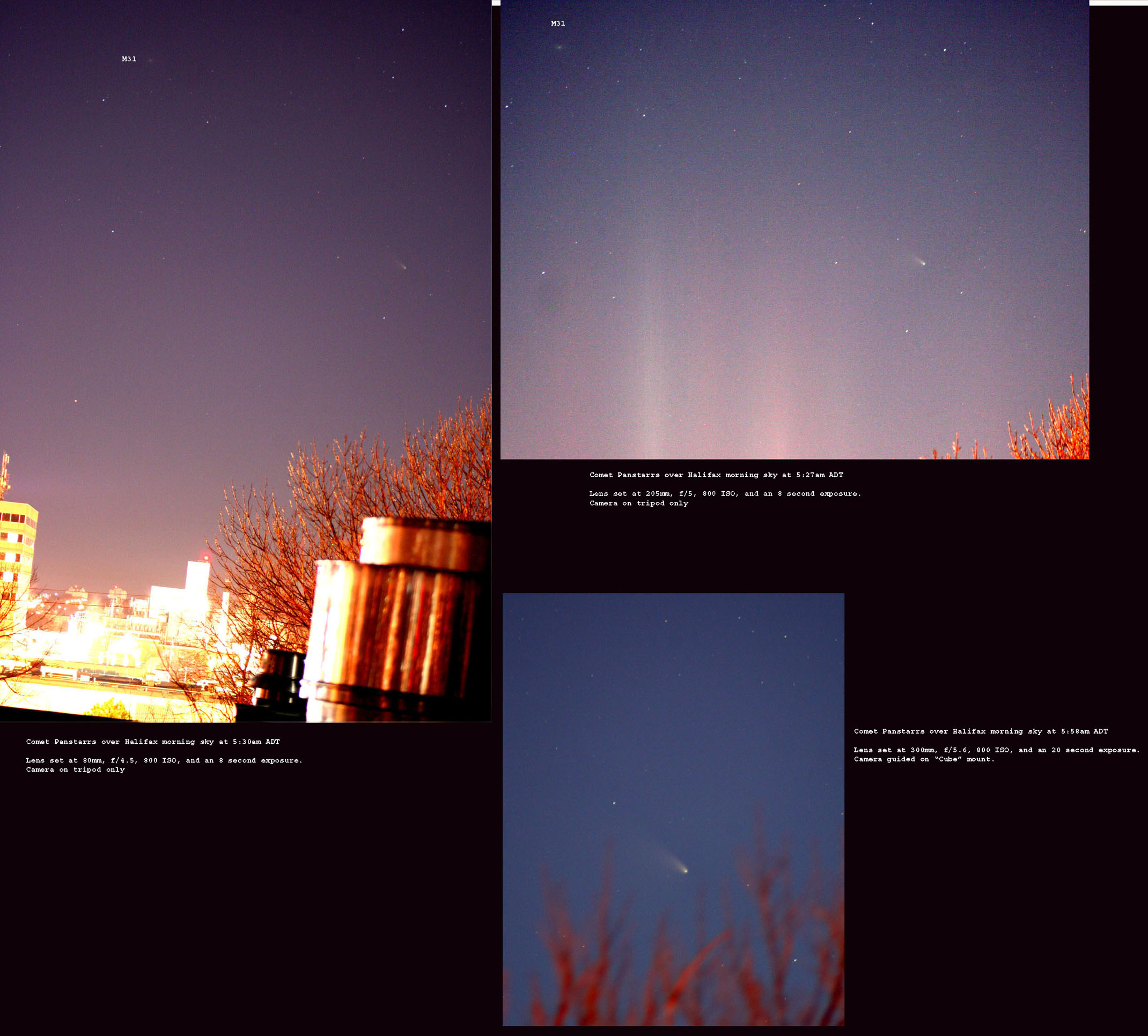
Comet Panstarrs in morning sky - March 30,2013
Image from my balcony in Halifax,Nova Scotia,Canada.
==========================================================
Images for 2015
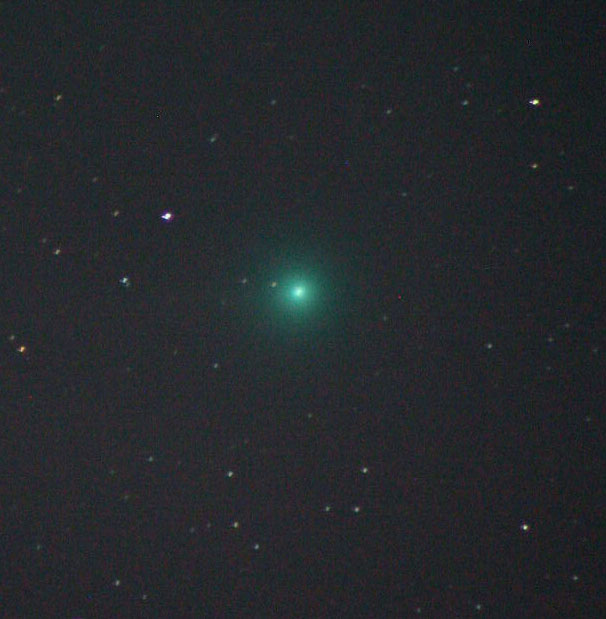
Comet Lovejoy C/2014 Q2 - January 8,2015
Canon xsi - 300mm telephoto, f/5.6, 91 sec exp.,800 ISO at 6:46pm
Image from my balcony in Halifax,Nova Scotia,Canada.
================================================================================================================
Images for 2019

1st Quarter Moon - November 04 at 5:30pm
Image taken from 8th floor closed back south window here - Halifax,Nova Scotia,Canada
ETX90 Maksutov and my Canon xsi at prime focus. 1/40 sec exp., 400 ISO at 5:30pm
=========================================================================================
Noctilucent Clouds - June 12-13,2019 from 10-10:30pm









My first sighting of NLC form Halifax in over 30 years of looking for them. Used Canon xsi, 50mm f/1.8 lens at 400 ISO
with various exposures of 4-8 seconds
======================================================
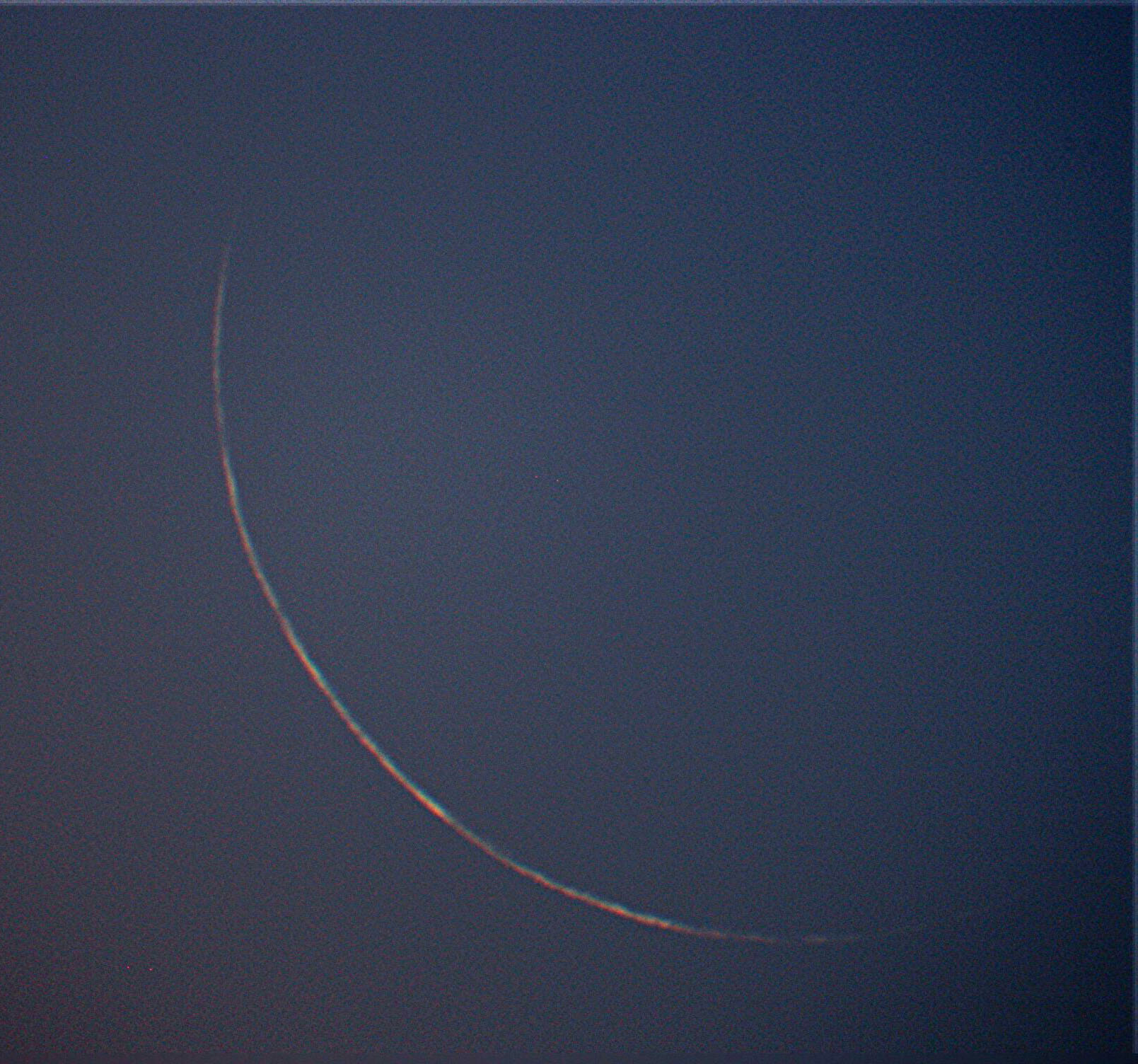
17h 28min old last thin crescent Moon - October 27,2019 at 7:10am
Image taken from 8th floor closed back south window here - Halifax,Nova Scotia,Canada
ETX90 Maksutov and my Canon xsi at prime focus. 1.2 sec exp., 400 ISO at 7:10am
Calculations done by Dr. Roy Bishop on my image...
Dear Michael,
That is an absolutely remarkable catch!
Everything came together for you:
The age of the Moon before its new phase
The steep tilt of the ecliptic in the dawn at this time of year
Perigee was yesterday; the high perigean angular speed of the Moon
put it well out from the Sun, given its short time before new.
Your longitude, so as to have the Moon in the sky
but not yet obliterated by daylight
The clear sky so close to the horizon
The seeing sufficiently steady that the crescent is broken
primarily by lunar mountains
You were prepared to catch the Moon within a very narrow
time window, and you did it through a closed window!
Unbelievable!! With planning, the chance of all these criteria occurring together is perhaps once in 10 or 20 years, or very seldom in a lifetime.
The crescent you recorded spans only about half of the usual 180-degree arc, and the arc does not have a smooth variation in brightness, because the Moon
crater rims blocking the light of the sunlit plains behind them.
Dave mentions how close in time the Moon was from new. Here is my calculation:
Your photo: 7:10 a.m. Oct. 27 = 10:10 UT Oct. 27
New Moon: 03:38 UT Oct. 28 = 27:38 UT Oct. 27
Thus the Moon was 17h 28min before new!
A photo of the crescent Moon
less than 24h before (or after) new is unusual
less than 20h before (or after) new is rare
17h 28min before new is, as Dave says, phenomenal!
Also this evening I realized that there is yet another critical celestial circumstance that was in your favour when you took the photo. I overlooked it in my earlier message.
The lunar orbit is tilted 5 degrees to the plane of the ecliptic. Thus during its eastward monthly motion, the ecliptic latitude of the Moon oscillates between +5 degrees and -5 degrees. According to p. 95 of the Observer
117.6 to 98.2, or near 101 degrees today, October 27. Guess where that puts the Moon today: +5.0 degrees, its maximum value during October (as tabulated on p.
D18 of the 2019 Astronomical Almanac)! A diagram (from Starry Night) will reveal why that maximum ecliptic latitude was in your favour this morning. Here is your ESE horizon sky 40 minutes after you took the photo (to show the Moon
relative to the Sun): The red line is the celestial equator, the green line the ecliptic. That +5 degree lunar ecliptic latitude together with the steep October dawn ecliptic puts the Moon directly above the Sun! Had the Moon been on the
ecliptic, or even worse, 5 degrees below the ecliptic, your photo would have been more difficult to obtain, and may not have been possible. And those two favourable circumstances were combined with the Moon
perigean fast angular speed (perigee was a day earlier). You could not have had more favourable celestial circumstances to get that photo! What luck, and what dedication on your part!!As I mentioned in my earlier message, only a very few times in a lifeti
me do circumstances enable a person to record an image of the Moon so close in time to its new phase (the remarkable 17h 28min that you achieved today).
==============================================================================================================================





































